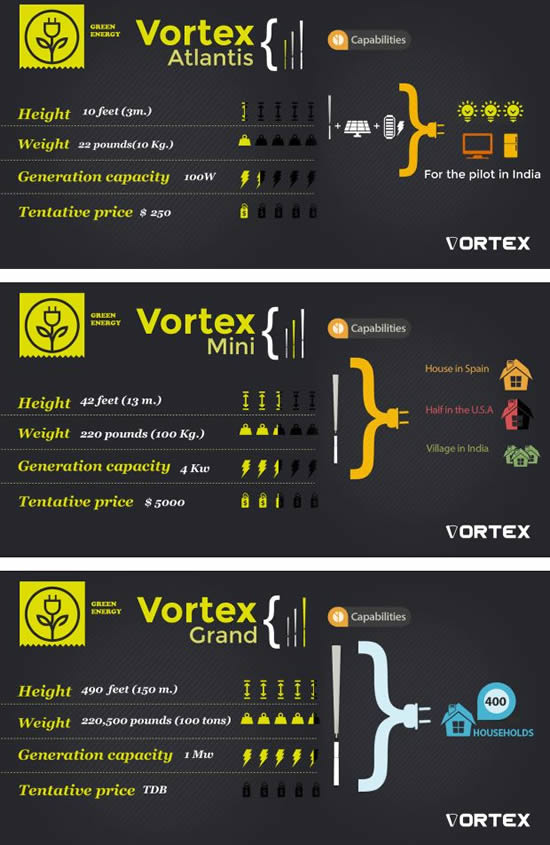Bladeless wind turbine enables efficiency savings
Inspired by a video displaying the awesome power of nature as it tore down the Tacoma Narrows Bridge in 1940, Vortex Bladeless aims to revolutionise wind power. The dramatic footage shows the bridge oscillating in strong winds, becoming caught in an aeroelastic coupling and eventually collapsing into Puget Sound, Washington.
A wind tunnel which reproduced the conditions that occurred at the time of the collapse eventually led to the development of the vortex bladeless, a revolutionary bladeless wind turbine which converts linear oscillating motion to energy. The structure attracts whirlwinds which develop at determined frequencies. When the frequency coincides with the resonant frequency of the structure, aeroelastic coupling enables peak energy absorbtion.
Hailed by its creators as potentially the 'most affordable wind turbine on the market', the vortex bladeless could cost around two thirds of the current cost of wind turbines, like for like in terms of energy generation. The current prototype suits wind speeds of 1.5-7m/s, and the next stage of prototyping will aim to support wind speeds of 3-15m/s.
When subjected to wind, an oscillating eddy is set up behind the conical structure, causing it to sway from side to side. This swaying multiplies once initiated, and a sine-wave oscillation is set up. The oscillating turbine generates energy using electromagnetic induction, with a linear alternator sitting at the bottom of the turbine part of the structure. The oscillation is converted to energy without the use of gears or ball bearings, elements which are easily rendered useless due to wear.
With a lower centre of gravity than conventional turbines, the vortex bladeless requires just half of the underground foundations of the current technology. A higher density of vortex turbines can be achieved than current turbines - enabling smaller, more condensed wind farms.
With its lightweight carbon-fibre construction, the stress placed on the critical components which support the structure's top half is minimal, and well within engineering limits. The gear-free system does not require lubrication, and computational modeling estimates operational lifetime of the installation to be between 32 and 96 years.
Vortex turbines are silent as they oscillate below 20Hz, represent a safer option in the case of severe weather and, without blades to collide with, pose no threat to birds. The turbine especially suits areas which are off-grid or remote. The next step for the Kickstarter-funded company is to develop a 4kW turbine for small businesses, distributed grids or individual homes. Commercialisation plans are scheduled for mid-2017, and details of the prototypes can be found in the image and video below.






